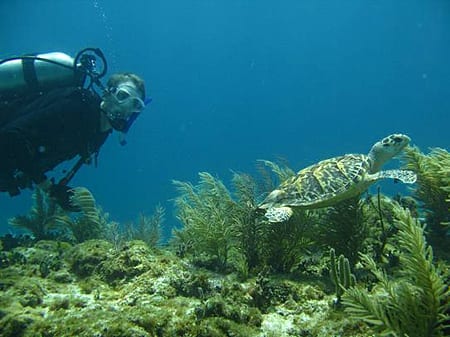By Daniel de la Calle
Woke up today missing Jimmy McNulty, hence the title. News, unstoppable, like rolling trains filled with sea adventures, awards, money, great videos and mahi mahi. Who could possibly offer you more?:
•MBARI (Monterey Bay Aquarium Research Institute) researchers started carrying out this past February a three month expedition along the Gulf of California, that 700 mile long finger of water between the peninsula of Baja California and mainland Mexico. You can check on their website logbook for updates on their research, which involves no less than two vessels, over 25 ROV pilots, 60 scientists plus the ship’s crew. Since the scope of research is quite broad, the expedition has been divided into seven legs, each one lasting around ten days. Leg number four will be about greenhouse gases in the deep sea. It will be led by Peter Brewer (buscar) and the marine chemists present will study the behavior of methane and carbon dioxide in the high-pressure and low-temperature environment of the gulf’s deep basins. They are hoping that Brewer’s work will help in the design of future experiments to test the effects of Ocean Acidification on a variety of marine organisms.
Also, check this mesmerizing, soothing and informative video on jellyfish made by MBARI staff. It won honorable mention in the National Science Foundation’s 2011 International Science and Engineering Visualization Challenge.
SOURCE
•University of Miami student Sean Bignami has received a $5,000 scholarship as winner of the Guy Harvey Scholarship Award. Mr. Bignami is a graduate student pursuing a Ph.D. at the Rosenstiel School of Marine & Atmospheric Science. The focus of his study is how the changing chemistry of the marine waters as a result of Ocean Acidification might affect the early development of large marine fish. His work uses mahi mahi and cobias as case studies.
He intends to devote much of his career to sharing the results of his research with decision-makers to ensure marine resources are managed effectively. He has also been teaching marine science to teachers and students, and for the last two years has worked with the “Science Made Sensible” outreach program, an effort that pairs Miami graduate students in science, math and engineering disciplines with middle school science teachers to provide students with more hands-on learning experiences.
“Communication is often not the strongest of a scientist’s skill set, at least not when considering the general public’s need for information to be delivered in a simple way that highlights its application to everyday life,” Bignami wrote in his scholarship application. “Reaching the public at a young age may be the most important way to instill love and appreciation for the ocean and the services it provides.”
 Photo credit: UM/RSMAS
Photo credit: UM/RSMAS
SOURCE
SOURCE 2
•Youtube video animation showing “how aragonite saturation at the ocean’s surface is projected to decrease towards the end of the 21st century as man-made carbon dioxide accumulation in the atmosphere continues to rise.”
The animation was generated as part of a project funded by the National Science Foundation, The Nature Conservancy and JAMSTEC.
•This news piece is not so new. A team of 19 scientists, using sensors developed at Scripps Institution of Oceanography at UC San Diego reported this past January results about the broadest worldwide Ocean Acidification study to date. They measured acidity in 15 ocean locations, from the Antarctic to the temperate and tropical seawater and results were very different from one place to the other. While in places like the Line Islands of the South Pacific and Antarctica the range of pH variance is limited, in sections of the California coast subject to upwelling pH fluctuations are intense. In some of the study areas the decrease in seawater pH deriving from CO2 emissions was still within bounds of natural pH fluctuation, but other areas already experience daily acidity levels expected to only be seen at the end of the century.
The study was made possible because all sensors were designed by Todd Martz, marine chemistry researcher at Scripps, so he “was in a unique position to assimilate a number of datasets, collected independently by researchers who otherwise would not have been in communication with each other. Each time someone deployed a sensor they would send me the data, and eventually it became clear that a synthesis should be done to cross-compare this diverse collection of measurements,” he said. That was when Gretchen E. Hofmann, an eco-physiologist and professor in UCSB’s Department of Ecology, Evolution & Marine Biology, worked with Mr. Martz to put together the research team to create that synthesis.
The authors noted that they only worked with information about coastal surface oceans, so more study is needed in deeper ocean regions further off the coast.
These two great videos show the deployment of a SeaFET pH sensor in the Ross Sea and a chilly visit to a SeaFET sensor in the very deep water under ice near McMurdo Station, Antarctica.


